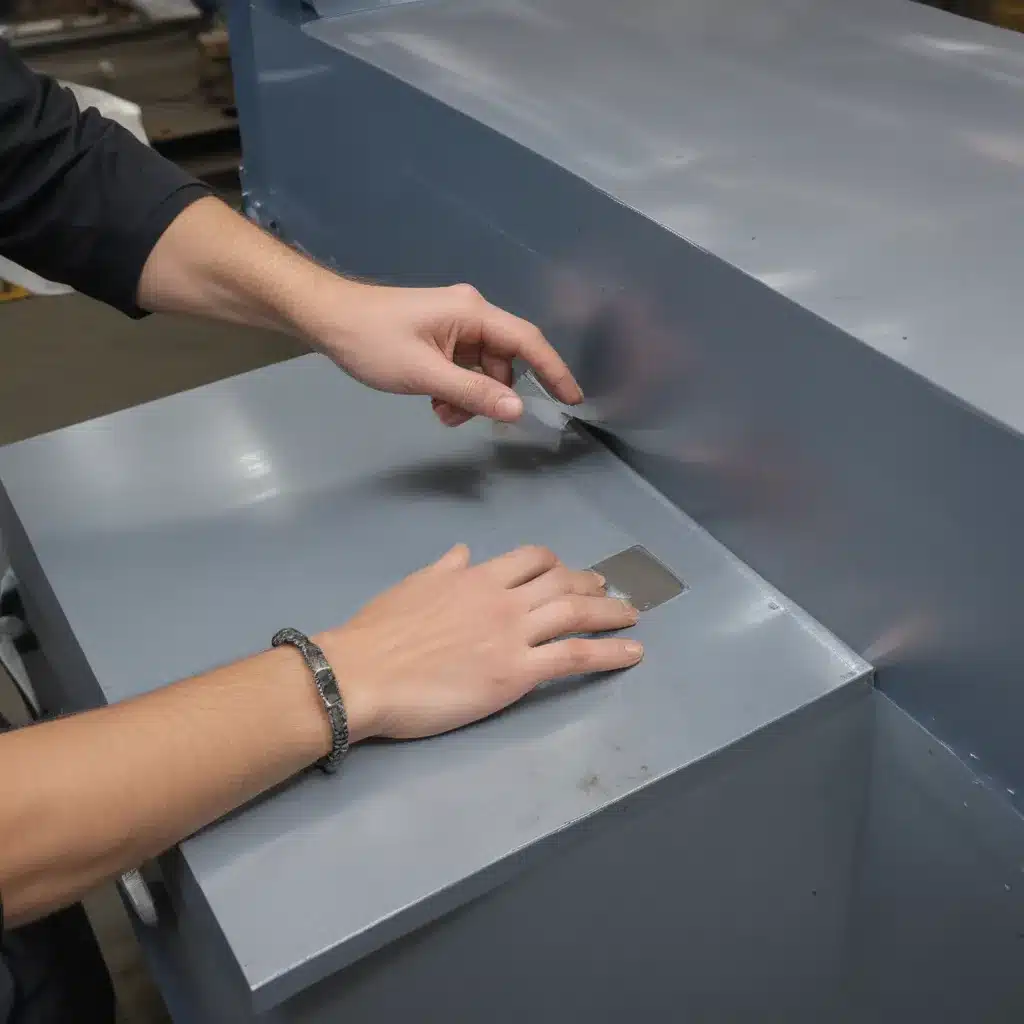
Alright, folks! Today, we’re going to dive deep into a topic that’s crucial for anyone working with sheet metal: identifying and avoiding those pesky pinch points that can lead to some serious injuries. As someone who’s been in the welding game for quite some time, I’ve seen my fair share of accidents, and let me tell you, they’re no fun. But fear not, my friends, because I’m here to share my hard-earned wisdom and hopefully save you from a trip to the emergency room.
Understanding Pinch Points
Let’s start with the basics: what exactly is a pinch point, and why should we care? Well, a pinch point is any area on a piece of equipment or machinery where a person could get caught between two moving parts, or between a moving and a stationary part. These little buggers can be found all over the place when you’re working with sheet metal, and if you’re not careful, they can turn your hands into the world’s most painful accordion.
Now, you might be thinking, “But I’m a pro! I know how to handle sheet metal like a boss.” And you’re probably right. But even the most experienced welders can get complacent, and that’s when accidents happen. Trust me, I’ve been there. One minute you’re cutting through a piece of steel like a hot knife through butter, and the next, you’re nursing a nasty gash on your finger. Not a good look, let me tell you.
Identifying Pinch Points
Alright, so how do we actually spot these pesky pinch points? Well, it all comes down to being aware of your surroundings and keeping your eyes peeled. Start by taking a good, hard look at the equipment you’re using. Where are the moving parts? Where do the sheets of metal come into contact with the machinery? These are prime candidates for pinch points.
And it’s not just the equipment you need to watch out for. The sheet metal itself can also be a source of danger. Those sharp edges and corners? Yep, those are pinch points too. And let’s not forget about the work surfaces – if you’ve got a table or workbench with a gap between the edge and the floor, you better believe that’s a prime spot for a finger to get caught.
Preventing Pinch Point Injuries
Okay, now that we know what to look for, how do we actually prevent these injuries from happening? Well, it all comes down to good old-fashioned safety practices. First and foremost, always wear the proper personal protective equipment (PPE) – gloves, safety glasses, steel-toed boots, the whole nine yards. These can help protect you if you do happen to get caught in a pinch point.
But PPE is just the tip of the iceberg. You also need to be mindful of your body positioning and movements. Avoid placing your hands or fingers in areas where they could get trapped, and keep a safe distance from any moving parts. And if you’re working with a partner, make sure you’re both on the same page about the potential hazards and how to avoid them.
Another important step is to keep your work area clean and organized. Cluttered workspaces are a breeding ground for pinch points, so make sure to tidy up as you go. And don’t forget to inspect your equipment regularly – worn or damaged parts can be a real safety hazard.
Real-World Examples
Now, I know what you’re thinking: “That’s all well and good, but how does this stuff play out in the real world?” Well, let me tell you a little story that might just hit home.
Last year, I was working with a crew on a big custom fabrication project. We were all feeling pretty confident, you know, like we had this whole sheet metal thing down to a science. But then, one of the guys got a little too close to the press brake while it was in operation, and BAM! His finger got caught in the pinch point. Let me tell you, it wasn’t a pretty sight. The poor guy was in agony, and we had to shut down the whole operation while we waited for the paramedics to arrive.
Needless to say, that was a wake-up call for all of us. We realized that even the most experienced welders can make mistakes, and that complacency is the enemy. From that day on, we made sure to be extra vigilant about identifying and avoiding pinch points, and it’s paid off in spades. No more trips to the ER, just smooth, safe, and efficient sheet metal work.
Embracing a Safety-First Mindset
Look, I know safety might not be the most exciting topic in the world, but trust me, it’s worth taking the time to get it right. When you work with sheet metal, even the smallest mistake can have big consequences. But if you approach your work with a safety-first mindset, you can avoid those nasty pinch point injuries and keep your hands (and the rest of your body) intact.
So, my fellow welders and fabricators, let’s make a pact: from this day forward, we’re going to be hyper-vigilant about pinch points. We’re going to inspect our equipment, keep our work areas clean, and always, always, always wear our PPE. And if we ever see a potential pinch point, we’re going to stop what we’re doing and address it right away. Because at the end of the day, a little bit of caution is a small price to pay to keep ourselves and our colleagues safe.
After all, what’s the point of being a badass welder if you can’t show off your skills because you’re laid up in the hospital? Let’s do this the smart way, folks. Let’s make safety our top priority, and let the sparks fly without the risk of injury. Who’s with me?
